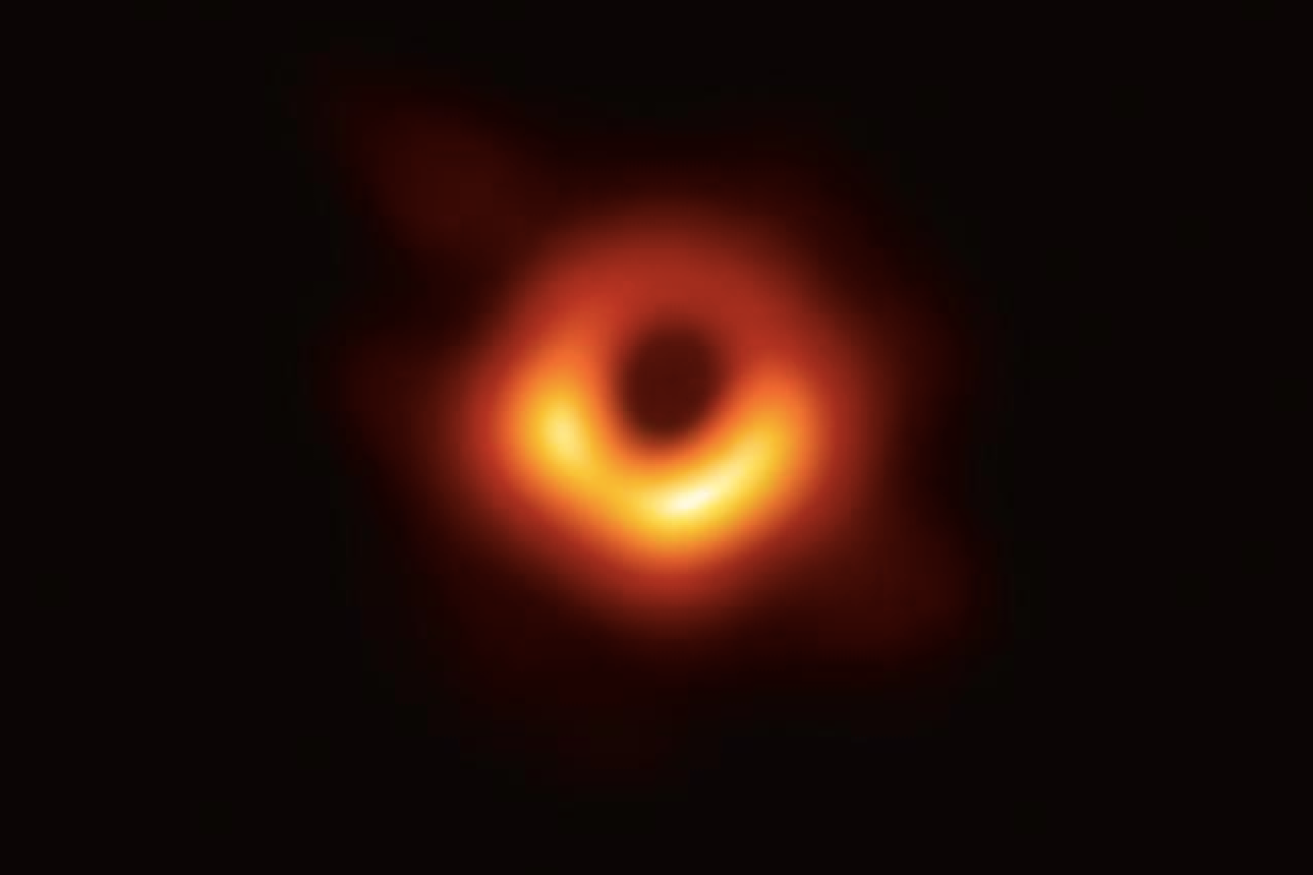Scientists share first ever image of black hole


The first ever photo of a black hole has been captured. Photo: Event Horizon Telescope Collaboration
The world has been given a glimpse of a phenomenon once thought unimaginable as scientists revealed the first-ever image of a black hole.
An international team of astronomers released the image on Thursday morning (Australian time) in the culmination of a groundbreaking collaboration of astronomers across the globe,
“We have seen what we thought was unseeable. We have seen and taken a picture of a black hole. Here it is,” Sheperd Doeleman of Harvard University said as he revealed the images.
The breakthrough images reveal a supermassive black hole containing a flaming orange, yellow and black ring, with shadowy edges that allow light to bend around itself in a cosmic funhouse effect.
The black hole is located inside the Messier 87 galaxy some 54 million light years from Earth.
Black holes have not previously been able to be directly seen because they absorb all light around them.
Scientists have only ever been able to detect the gravitational waves emanating from black holes that collided with one another billions of years ago.
The first ever close up an image of a black hole was captured by eight radio telescopes around the world spanning six cities on three continents, and involved the work of more than 200 scientists.
The image is a result of work carried out over several years by the Event Horizon Telescope collaboration, which began in 2012 to try to directly observe the immediate environment of a black hole.
Jessica Dempsey, a co-discoverer and deputy director of the East Asian Observatory in Hawaii, likened the photo of the black hole to the powerful flaming Eye of Sauron from the Lord of the Rings trilogy.

The brighter half of the ring. Photo: Event Horizon Telescope Collaboration
Scientists have estimated that it holds a weight 6.5 billion times greater than that of the sun.
The announcement was made in simultaneous news conferences in Washington, Brussels, Santiago, Shanghai, Taipei and Tokyo.
Taken over four days when astronomers had “to have the perfect weather across the world and literally all the stars had to align”, the image helps confirm Albert Einstein’s general relativity theory, Ms Dempsey said.
Einstein a century ago even predicted the symmetrical shape that scientists just found, she said.
“It’s circular, but on one side the light is brighter,” Ms Dempsey said. That’s because that light is approaching earth.
Black holes, phenomenally dense celestial entities, are extraordinarily difficult to observe despite their great mass. A black hole’s event horizon is the point of no return beyond which anything – stars, planets, gas, dust and all forms of electromagnetic radiation – gets swallowed into oblivion.
“This is a huge day in astrophysics,” said US National Science Foundation director France Cordova. “We’re seeing the unseeable.”

The galaxy M87 where the suppermassive black hole resides. Photo: Hubble
The scientists look for a ring of light – disrupted matter and radiation circling at tremendous speed at the edge of the event horizon – around a region of darkness representing the actual black hole. This is known as the black hole’s shadow or silhouette.
The project’s researchers obtained the first data in April 2017 using telescopes in the US states of Arizona and Hawaii as well as in Mexico, Chile, Spain and Antarctica.
Since then, telescopes in France and Greenland have been added to the global network. The global network of telescopes has essentially created a planet-sized observational dish.
The telescope data was gathered by the Event Horizon Telescope two years ago, but it took so long to complete the image because it was a massive undertaking, involving about 200 scientists, supercomputers and hundreds of terabytes of data delivered worldwide by plane.
The team looked at two supermassive black holes, the M87 and the one at the centre of our own Milky Way galaxy. The one in our galaxy is closer but much smaller, so they both look the same size in the sky. But the more distant one was easier to take pictures of because it rotates more slowly.
-with agencies







